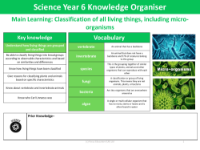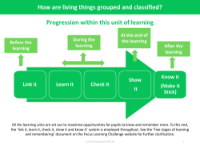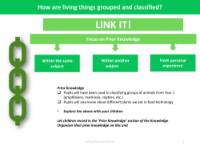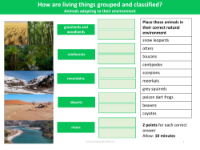Long-term overview - Grouping Living Things - Year 6
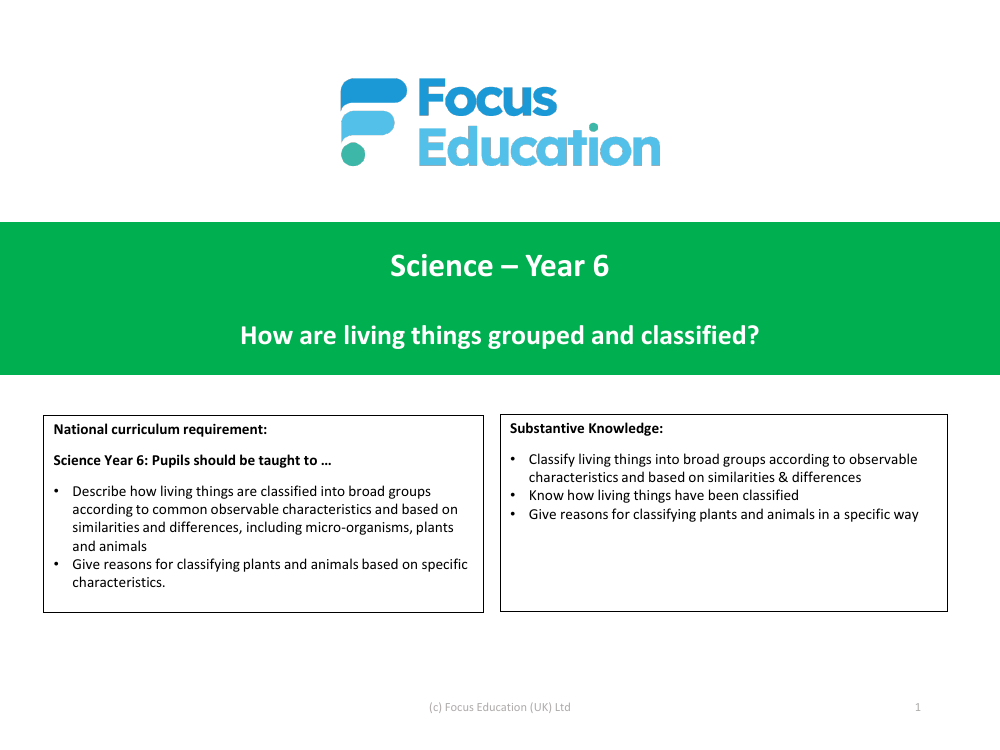
Science Resource Description
The Year 6 science curriculum introduces pupils to the intricate world of biological classification, where they learn to categorise living things into broad groups. This educational journey explores the common characteristics and distinctions among diverse life forms, including micro-organisms, plants, and animals. The national curriculum requirement emphasises that students should not only be able to describe how living things are classified but also understand and articulate the reasons for such classifications based on specific traits.
Delving into the substantive knowledge aspect, the curriculum guides students through the process of classifying living things according to observable characteristics, understanding historical and contemporary classification systems, and justifying the rationale behind categorising plants and animals in particular ways. The curriculum encompasses various scientific methods such as observation over time, exemplified by monitoring conditions that cause bread to mould, and pattern seeking, like comparing resting heart rates among different people. Additionally, students investigate the five kingdoms of life—animals, plants, monera, protista, and fungi—and explore the unique adaptations that enable certain species to thrive. The curriculum also pays homage to the father of modern taxonomy, Carl Linnaeus, whose work underpins modern biological classification. This Year 6 science overview builds on foundational knowledge from earlier years, linking back to Year 1 and Year 4 units that focus on the animal kingdom.
